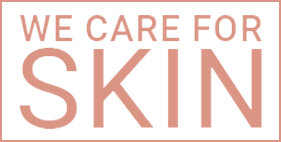Aging is inevitable but we can delay it: How to combat premature aging
Aging is a natural process and everyone will experience it in their lifetime. Aging cannot be defined exactly, but the most accepted idea is that it is part of the life cycle – after birth, people go through phases in life until they reach a point when they begin to age.
It is the single most important modulator of the human lifespan. This means that everyone, regardless of social status or socioeconomic standing, will age.
The aging process does not start at the same time for everyone, and not even all the organs in the same individual age at the same rate. Hence, it is hard to define aging since it involves the physical, mental, and psychological facets.
Aging is a complex process and digging deeper, there are several theories to describe how and why people age differently.
Types of Aging
Cellular Aging
The cells in the body can replicate approximately 50 times before the genetic material becomes stale and can no longer reproduce properly. The failure of these cells to replicate is termed cellular senescence. Accumulated senescent cells are the hallmark of cellular aging.
Cellular aging involves the damage to cells caused by free radicals and environmental factors. This is termed oxidative stress, which may cause premature aging. When the cells become damaged regularly, they compensate by replicating more, hastening the process of cellular senescence. This is why some people may look or feel older than others of the same age.
Cellular aging presents intrinsic and extrinsic signs. Intrinsic signs include sagging of the skin, while extrinsic signs include presence of wrinkles, fine lines, and dark spots.
Hormonal Aging
In aging, the hormones in the body play a pivotal role, particularly during childhood as they help build bones and muscles. As a person reaches puberty, these hormones are responsible for the appearance of secondary male or female characteristics.
Over time, the body releases fewer hormones, leading to skin changes such as wrinkles and the loss of elasticity. Further, there is a loss of muscle tone, sex drive, and bone density.
Metabolic Aging
Aging can result from metabolic aging. Metabolism is another important process in the body affected by aging. Each day, the cells in the body turn food into energy, which produces byproducts. Some of these can become harmful and toxic to the body.
When metabolism causes progressive damage to the various cells, it is called metabolic aging. In fact, aging is arguably the most universal contributor to chronic diseases such as cardiovascular disease, type 2 diabetes mellitus, and stroke.
Insulin resistance (IR) represents a major component of metabolic syndrome and is commonly seen among adults.
Accumulative Damage
The cumulative damage or the “wear and tear” in the body is usually caused by external or environmental factors. For instance, the ultraviolet rays from the sun can cause skin damage in the long run. Exposure to these toxins, including unhealthy foods and pollution can take a toll on the body.
Skin Aging
One of the most affected and obvious parts of the body that shows aging is the skin. Though aging is inevitable and irreversible, it can be delayed.
Your skin changes as you age. Over time, you might notice the appearance of wrinkles, fine lines, age spots, and dryness. It may also become thinner as it loses fat, making it less smooth and plump. Skin wounds and irritations may also take longer to heal.
In this article, you will learn all about skin aging, what factors contribute to it, what major skin components are affected, and how to prevent premature skin aging. But first, let us tackle a little about the skin, its functions, and its basic parts.
The Skin and its Functions
The skin has many functions in the body. The most obvious one is that it acts as a protective shield against harmful environmental elements, such as heat, injury, light, and infection.
Apart from protecting the body, the skin has more benefits than what meets the eye. It performs important roles, including regulating the body temperature, storing water and fat, preventing water loss, helping make vitamin D when exposed to the sun, and as a sensory organ.
What are the Parts of the Skin?
 The skin and its appendages, including the hair, nails, and certain glands, form the largest organ in the body. It has a total surface area of 2 square meters and comprises 15 percent of the total adult body weight.
The skin and its appendages, including the hair, nails, and certain glands, form the largest organ in the body. It has a total surface area of 2 square meters and comprises 15 percent of the total adult body weight.
The outermost layer of the skin is called the epidermis, which is composed mainly of keratinocytes. These cells are the most common type in the epidermis and are responsible for the synthesis of keratin, a protein that makes up the hair, skin, and nails.
Beneath the epidermis is the second layer of the skin called the dermis. Unlike the epidermis, this layer contains the connective tissues, blood vessels, nerves, hair follicles, oil and sweat glands, and other structures.
The third layer or the deepest layer of the skin is the subcutaneous tissue, also known as subcutis or hypodermis. It is not technically part of the skin but it aids in attaching the skin to the muscles and bones. It also provides the skin with blood supply and nerves.
This layer of the skin contains fat, connective tissue, and elastin, which helps tissues to return to their normal shape after stretching.
Skin’s Important Structures
Apart from these structures, there are other notable and essential skin elements that we need to discuss.
Collagen
Collagen is the most abundant protein in the body that plays crucial roles, including providing structure to the skin and helping the blood clot. As early as mid 20’s, the percentage of collagen level decreases.
It is also known as one of the major building blocks for the bones, skin, hair, muscles, ligaments, and tendons. Collagen is a hard, fibrous, and insoluble protein that makes up one-third of the protein in the human body.
In most collagens, the molecules are packed together, forming thin fibrils that serve as supporting structures for cells. They provide strength and elasticity to the skin.
Further, it keeps the skin from sagging, giving it a plump and youthful look.
The body naturally produces collagen but the production decreases with age. Apart from aging, collagen production declines due to exposure to factors like smoking and exposure to ultraviolet light.
Elastin
Elastin is a key protein of the extracellular matrix, which is critical to the elasticity and resilience of various tissues such as the lungs, ligaments, tendons, skin, elastic cartilage, and large arteries.
Elastin is an essential skin protein-containing crosslinked tropoelastin. It also combines with microfibrils to form elastic fibers that provide stretch and recoil to the skin.
Elastin formation, also called elastogenesis, occurs during fetal development of organs such as the lungs, skin, and blood vessels. However, it has a very low turnover rate, making it prone to damage over time.
Tropoelastin, the major component of elastin, is mainly expressed during early development but declines during adulthood. Aging results in a reduction of elastin production, affecting skin appearance. This causes the skin to look looser, sagging, and fragile.
Hyaluronic acid
Hyaluronic acid (HA) is a sugar naturally found in the skin that holds water. Also called hyaluronan, HA is a glycosaminoglycan (GAG) with a unique capability to bind and retain water molecules.
HA is part of the extracellular matrix molecules, composed of repeating polymeric disaccharides of D-glucuronic acid and N-acetyl-D-glucosamine linked by a glucuronide β (1→3) bond.
Over the past two decades, there was considerable evidence showing the functional role of HA in molecular mechanisms. The main functions of HA include hydration, lubrication of joints, a framework through which cells migrate, and a space-filling capacity.
In the skin, HA accounts for about 50 percent of total body HA. It is more abundant in the dermis than the epidermis, where it regulates water balance, osmotic pressure, and ion flow and functions as a sieve.
Roughly half of the hyaluronic acid in the body is present in the skin, where it binds to water to help retain and conserve water. However, the aging process and exposure to harmful elements like ultraviolet radiation from the sun, cigarette smoke, and pollution can deplete the amounts of HA in the skin.
Subcutaneous fats decrease as a person ages, thus causing the loss of skin volume.
When the skin is hydrated, it helps reduce the appearance of wrinkles, hence, supplementing with HA is recommended. On the other hand, dehydrated skin may look wrinkled and dry.
Skin Problems related to Aging
Skin aging may begin by the age of 25 when the bodies gradually start to stop producing as much collagen, elastin, and hyaluronic acid as before. This causes the skin to lose elasticity and moisture.
Some of the skin problems include rough skin or dry skin, benign growths such as keratoses and cherry angiomas, thinned skin, easy bruising, less elasticity, loose facial skin around the eyes, cheeks, and jawline, wrinkles, fine lines, and age spots.
When these skin problems appear before the age of 25, it is termed premature skin aging.
Ways to Prevent Skin Aging
Skincare products
A good skincare routine is only as good as the products you use. Using skincare products to combat aging is important because it helps the skin stay in good condition, making it look more youthful. These products also help prevent skin problems before they become worse and they help boost your confidence and self-esteem.
Moisturizers
When the skin is dehydrated or it lacks moisture, it is unable to repair itself, making it vulnerable to damage caused by the harmful rays of the sun and other toxic elements in the environment.
Moisturizers prevent and treat dry skin. They also protect sensitive skin and improve skin texture. In the facial area, moisturizing the skin is essential to help prevent further breakouts. When the skin is dry and irritated, it becomes prone to acne and breakouts. Using a suitable moisturizer can reduce any skin problems in the future.
Some of the notable products that can help moisturize the skin are creams, lotions, and recently, the use of night oils has gained immense popularity. For instance, the Nourishing Night Oil (NNO) enriched with vitamin E, has shown promise as a potent moisturizer that can be used by those who want plumper, hydrated, and smooth skin.
The In vivo efficacy test of the product showed that using the night oil once had significantly improved the moisturizing of the outer skin layers over a 6-hour period. Using it for two weeks had also improved the outer skin layer, making it hydrated to prevent dryness and roughness.
Other recommended skincare products are retinoids, sunscreen, and vitamin C.
Non-surgical treatments (Non-invasive treatments)
There are non-surgical treatments that can help reduce the appearance of aging skin. These include:
Oral Supplementation
Over the past decades, as more people become self-conscious about their skin and appearance, many oral supplements have reached the market.
Collagen Supplements
Collagen supplements, for one, have gained the attention of consumers.
Since collagen in lotions and skincare products cannot be absorbed through the skin, collagen supplements can help restore and maintain collagen levels, preventing premature skin aging.
Taking collagen has many important functions, such as improving skin structure and strengthening the bones. Recent collagen supplements are hydrolyzed, which means the collagen has been broken down, making it easier for the body to absorb.
A novel collagen supplement, collagen hydrolysate (CH), has shown promise in making the most of the collagen taken into the body. Using the supplement yielded positive results. After four weeks of the last intake of CH, skin elasticity in all age groups improved. Notably, elderly women manifested higher skin elasticity levels.
Commercially known as Gloww Collagen, a type of CH is making rounds in the market, providing potent collagen supplements to help battle skin aging. It contains Verisol B, a composition of different specific collagen peptides derived from special hydrolysis of porcine or bovine type I collagen.
Studies have shown that Verisol has beneficial impacts on the skin, increasing dermal collagen, biglycan, and elastin synthesis. It reduces wrinkle volume and significantly improves skin elasticity.
Antioxidants
The intake of certain antioxidants, which can fight off free radicals to prevent oxidative stress and skin aging, is crucial to fight premature skin aging. Some antioxidant supplements include vitamins C, E, and B3.
The antioxidant properties of vitamin C in face serums and skincare products help fight free radicals and damage caused by UV radiation. Meanwhile, vitamin B3 works to reduce water loss and retain moisture in the skin. It also helps increase keratin levels.
Vitamin E, meanwhile, primarily reacts with reactive oxygen species, preventing oxidative stress. It can also absorb the energy from UV light.
Surgical treatments (Minimally-invasive treatments)
Having clear, smooth, and young skin does not always have to involve invasive products. There are minimally invasive procedures that can help you combat skin aging, including microdermabrasion, chemical peels, ultrasound, and radiofrequency devices, neuromodulators, and dermal fillers.
Dermal fillers or soft-tissue fillers are injections to make the skin look plump by filling in wrinkles and folds. Doctors and licensed healthcare workers inject these fillers into the skin. Some popular fillers contain collagen, hyaluronic acid gel, and fat. The parts of the body where these fillers are injected include the face, hands, and lips.
A popular dermal filler product is Visaglow, which contains hyaluronic acid and lidocaine. This product is useful to flatten out wrinkles and fine lines, making the skin look younger and plumper.
Fight premature skin aging
People of all ages will experience aging at some point in their lives. Some people may experience it faster than others. Adults in their mid-20s should start taking care of their skin to prevent skin aging problems, such as wrinkles, fine lines, and age spots.
Being proactive when it comes to skincare is essential to look youthful and radiant. Time cannot be turned back, what you should do now is prevent the skin from being damaged, dry, and wrinkled.
We hope this article helped you gain an insight into the skin and how aging affects it. Taking a step to prevent skin aging now can help you become more confident to face other people from all walks of life.



